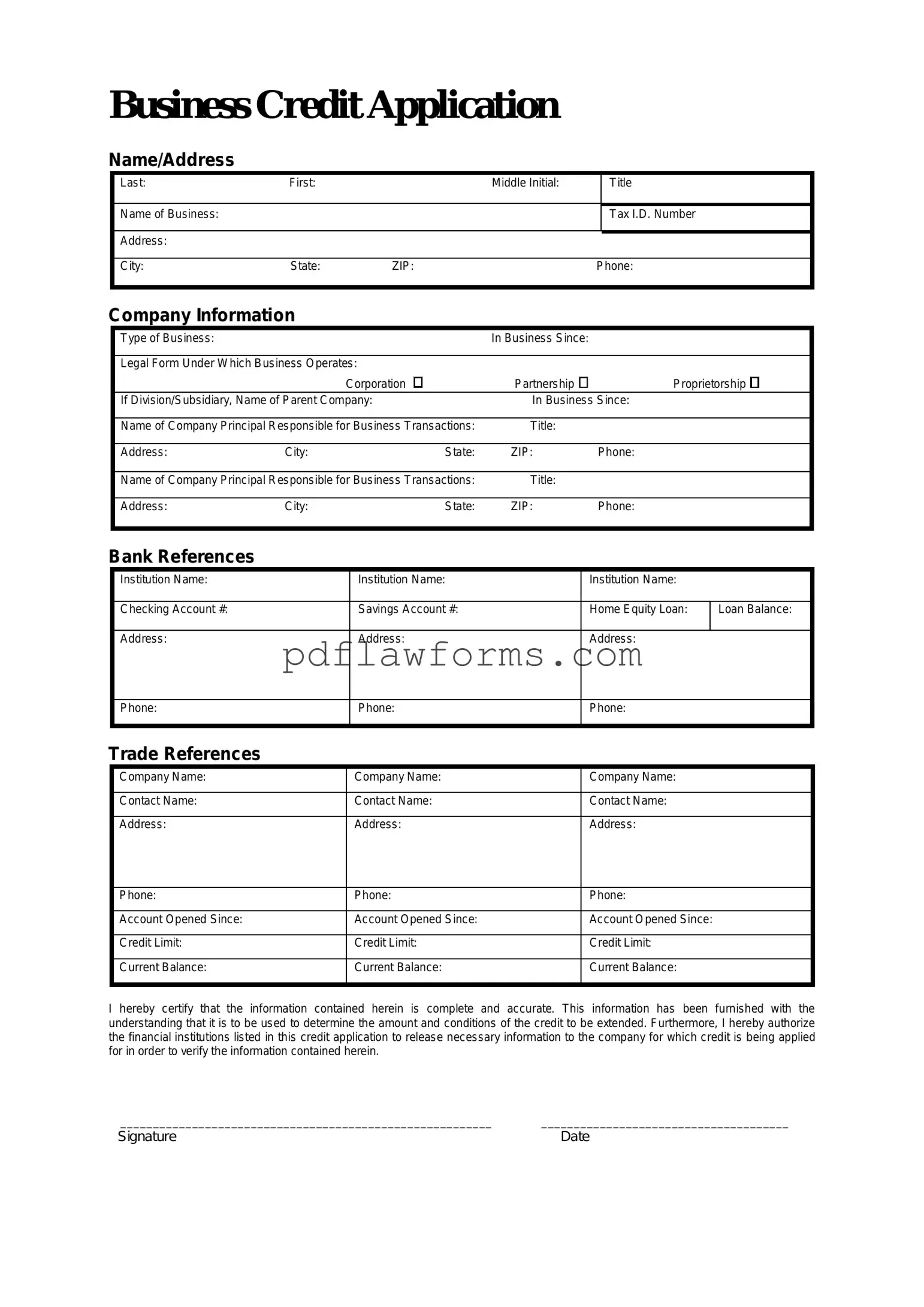Fill Your Business Credit Application Template
The Business Credit Application form is a crucial document that businesses use to request credit from suppliers or lenders. This form collects essential information about the business's financial status and creditworthiness, helping creditors assess risk. To get started on securing credit for your business, please fill out the form by clicking the button below.
Make My Document Online
